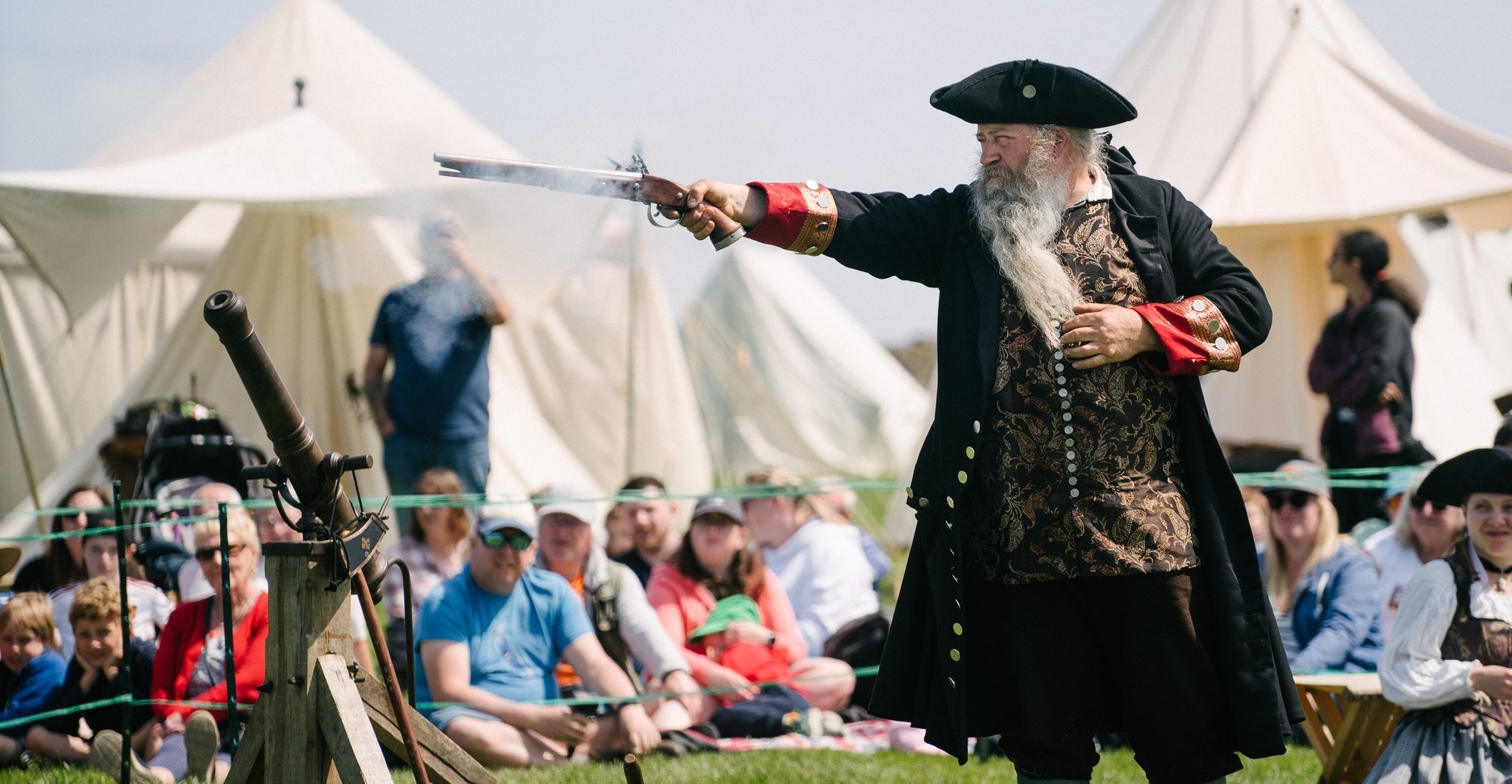Rogues and Highwaymen
On 2 & 3 August Chiltern Open Air Museum will be taken over by the Rogues and Highwaymen of the Suffolk Free Company, but what were highwaymen and why are they notorious in British history?
Stagecoaches - a New Mode of Transport for the 17th Century
Stagecoaches took their name from the term ‘stage’, the distance between stops along a route. The aim was to convey fare-paying passengers and the first route, from Edinburgh to Leith, started in 1610. But with coaches making slow progress on primitive roads, coaching inns soon began to spring up to provide teams of fresh horses and refreshments for coach passengers, including overnight stops on long journeys.
Stagecoaches Passing Through Amersham
There were a dozen pubs in Amersham and three coaching inns – the Griffin, the Swan and the Crown. By 1737, two stagecoaches were passing through the town daily. Although the first turnpikes dated from the 17th century, main routes from London were turnpiked early in the 18th century, increasingly funded by the levying of tolls on certain kinds of traffic – particularly wheeled vehicles, horses, and cattle going to market. During this period road surfaces improved and turnpike roads were often straightened, widened, and given gentler curves and gradients. Stagecoach construction also evolved with the fitting of better brakes and suspension, allowing speeds to increase from around six to eight miles per hour, inclusive of stops. The advances meant a journey from London to Manchester which would have taken days in 1750 could be completed in 26 hours by 1821.
The Creation of Toll Houses
Small toll houses provided accommodation for the gate keepers, with side windows angled to give views of approaching traffic from both directions and a board attached in a prominent position displaying the table of tolls.
The Toll House at our museum, originally in High Wycombe, is an excellent example of such a building. It formed part of the turnpike from Beaconsfield to Stokenchurch. It was turnpiked as early as 1719 and there were gates at Denham, Red Hill, Holtspur, High Wycombe and West Wycombe. The coming of the railways led to a decline in the use of coaches and stagecoaches from London to Birmingham were withdrawn in 1839, followed by Bristol in 1844 and Plymouth in 1848. The London to Wendover coach ran until 1890, and then the railway stations at Amersham, Great Missenden and Wendover opened in 1892. The last mail coach in the Midlands ran out of Manchester in 1858 though services continued in those areas the railways were slow to reach, such as Cornwall, Mid Wales, the Peak District and far North of Scotland.
Highwaymen of the Chilterns
Highwaymen were a frequent danger for stagecoach passengers. A notorious local highwayman was Jack Shrimpton, a native of Penn. He was caught and hanged in 1713 and The Bull in Gerrards Cross has a bar named after him, which he is said to have frequented. The execution of highwaymen was always a well-attended event and in 1736 the hanging of the attackers of a farmer who had been robbed and murdered were hanged from a twenty-eight foot gibbet on The Rye in High Wycombe. (Gibbeting meant displaying the body of the criminal in a cage by hanging it from a wooden post until it decayed.)The crowd was so great that it pushed down part of the Grammar School wall. Four years later another hanging was to occur and stalls and booths were set up for the coming spectacle. However the gibbeting was cancelled and the crowd nearly rioted. The last highwayman to be hanged was James (known as Robert) Snooks. In 1802 he was caught after a robbery at Boxmoor. He was hanged and buried near the spot where it occurred. In 1904, a stone was placed there which reads “Robert Snooks 11 March 1802”.
[Material from The Beyonder website and Free Bucks Press]
Written by Museum Volunteer Roger Coode.


